New World 5. Natural, Social and Cultural Environment
D. The relief, rivers and climate of Europe
1. The relief and rivers of Spain
2. Climate and vegetation in Spain
D. Periods of history
3. Prehistory
4. Ancient History
5. The Middle Ages
6. Living things
7. Animals
8. Plants
D. Fungi
9. Human reproduction
10. Animal reproduction
11. Plant reproduction
12. Matter and materials
13. Energy
G. Glossary
Este libro contiene:
-
17 secuencias
-
960 recursos
-
Idioma:
- Inglés
Libro de texto
-
1. The relief, rivers and climate of Europe
- Ir a ficha de secuencia
- 0 secuencias
- 1 recurso
Europe Europe is situated in the Northern Hemisphere. It occupies an area of 10500000 km2 and is the second smallest continent. Europe's limits are defined by: The Arctic Ocean to the north. Asia to the east. The Atlantic Ocean to the west. The Mediterranean Sea and the Strait of Gibraltar to the south. [...]
-
2. The relief and rivers of Spain
- Ir a ficha de secuencia
- 0 secuencias
- 78 recursos
The continent of Europe is located in the Northern Hemisphere. The Iberian Peninsula is located in the south-west of Europe. It is joined to Europe by the Pyrenees mountains in the north. The most southern point of the Peninsula is only a few kilometres from Africa. The Iberian Peninsula is surrounded by the Mediterranean Sea, the Bay of Biscay and the Atlantic Ocean. Spanish territory includes the Balearic and Canary Islands. [...]
-
3. Climate and vegetation in Spain
- Ir a ficha de secuencia
- 0 secuencias
- 74 recursos
Most of Spanish territory is located in the temperate zone of the Northern Hemisphere. This is why Spain's climate is generally temperate. On the Iberian Peninsula, factors like distance from the sea and relief mean that there are four different climate areas: Mediterranean, Atlantic, continental and mountain. The Canary Islands are located in a hotter climate zone of the Earth, and have a subtropical climate. [...]
-
4. Periods of history
- Ir a ficha de secuencia
- 0 secuencias
- 3 recursos
History is the story of the past. We study history to learn about what humans did and how they lived many wears ago. History helps us understand how our ancestors lived and how we evolved. Human history started more than a million years ago. To measure time, we use years and decades (10 years). For longer periods of time we use centuries (100 years) and millenniums (1000 years). [...]
-
5. Prehistory
- Ir a ficha de secuencia
- 0 secuencias
- 58 recursos
Prehistory is the first period in human history. Prehistory began when the first humans appeared between two and three million years ago. It ended when humans invented writing almost 6000 years ago. Prehistoric humans did not know how to write, so we do not know very much about them. We study historical sources to learn about Prehistory.
-
6. Ancient History
- Ir a ficha de secuencia
- 0 secuencias
- 81 recursos
Ancient history began in about 4000 BC when writing was invented. About the year 1000 BC, two different tribes called the Iberians and the Celts lived on the Iberian Peninsula. In the year 218 BC, the Romans began their conquest of the Peninsula. The Romans gave it the name of Hispania and it became a province of the Roman Empire. The Iberians and Celts became Romanized: they gradually adopted the Roman language, laws and customs.
-
7. The Middle Ages
- Ir a ficha de secuencia
- 0 secuencias
- 79 recursos
The Middle Ages began when the Roman Empire fell in 476. In 711, Muslim armies from North Africa conquered almost all of the Iberian Peninsula. They created a new state called Al-Andalus. In the north of the Peninsula, some Christian kingdoms were formed. These kingdoms began to expand south and by 1492 the Christians had conquered Al-Andalus. [...]
-
8. Living things
- Ir a ficha de secuencia
- 0 secuencias
- 60 recursos
There are a great variety of living things on the Earth. Some are microscopic and very simple, like bacteria, and others are very big and complex, like elephants. Even though they are different, all living things have the same vital functions and they are all made up of living components called cells. There are millions of varieties of living things. We classify them into different groups in order to study them and understand more about them.
-
9. Animals
- Ir a ficha de secuencia
- 0 secuencias
- 97 recursos
Animals belong to the largest and most diverse group of living things. There are over two million different animal species. Animals get the energy they need by eating food. They can move from place to place and have sense organs that allow them to react quickly to their surroundings. In this unit we are going to study the main groups of animals.
-
10. Plants
- Ir a ficha de secuencia
- 0 secuencias
- 64 recursos
Plants make up one of the largest groups of living things on Earth. There are many different species of plants. These include: algae, mosses, ferns and flowering plants. Plants are different to animals as they can make their own food and they do not move from place to place. They are very important for life on Earth because they produce oxygen and provide food for other living things. Without plants there would be no life on Earth.
-
11. Fungi
- Ir a ficha de secuencia
- 0 secuencias
- 6 recursos
Fungi are an important group of living things. This group includes mould and mushrooms. Fungi are different from animals and plants. Like animals, fungi feed on organic matter from other organisms. However, like plants, fungi cannot move from place to place. Fungi live in damp places. Most fungi feed on plant matter (like leaves and tree trunks) or animal matter. Some fungi are parasites. This means they feed on live plants and animals. [...]
-
12. Human reproduction
- Ir a ficha de secuencia
- 0 secuencias
- 65 recursos
Reproduction is an essential function in human beings. It enables humans to produce individuals similar to themselves. In this unit you will learn how the reproduction that started your life occurred. Where were you before you were born? While your body was forming and growing, you spent nine months in your mother's body. [...]
-
13. Animal reproduction
- Ir a ficha de secuencia
- 0 secuencias
- 69 recursos
In the last unit you learnt how humans reproduce sexually. Most other animals also reproduce sexually, by the fertilisation of an egg by a sperm. This involves the participation of a male and a female. However, there are some animals that do not need another individual to reproduce. These animals reproduce asexually.
-
14. Plant reproduction
- Ir a ficha de secuencia
- 0 secuencias
- 68 recursos
In this unit we are going to learn about how flowering and non-flowering plants reproduce. The reproductive organs of most plants are in the flowers. It is in this part of the plant that the two reproductive processes occur: pollination and fertilisation. After fertilisation, the flowers develop into fruit, containing seeds. These seeds germinate and grow gradually into a new plant.
-
15. Matter and materials
- Ir a ficha de secuencia
- 0 secuencias
- 73 recursos
Everything around us is made up of matter. Matter can be found in three states: solid, liquid and gas. The air we breathe is a gas, the water in rivers and seas is a liquid, and the rocks are in a solid state. Air, water and rocks are different because they are made up of different types of matter, called substances. Materials are the different types of matter that objects are made from. Materials include wood, iron, glass and paper. [...]
-
16. Energy
- Ir a ficha de secuencia
- 0 secuencias
- 81 recursos
The Sun is the Earth's main energy source. The Sun provides plants and animals with light and heat. This means that they can grow, develop and live on Earth. Heat energy has other effects on objects: it increases their temperature and changes their volume. Humans also use other sources of energy, like wind, water, oil and coal. We convert this energy into electrical energy in power stations. [...]
-
17. Glossary
- Ir a ficha de secuencia
- 0 secuencias
- 3 recursos
Unit 1: The relief and rivers of Spain altitude (n): the height of land measured from sea level. border (n): a line separating two countries. coast (n): the part of the land near the sea. coastline (n): the land along a coast. flow (n): the amount of water that a river carries. island (n): a piece of land surrounded by water. mountain range (n): several mountains grouped together. [...]
Cursos y asignaturas
-
Aún no hay comentarios, ¡comparte tu opinión! Inicia sesión o Únete a Tiching para poder comentar
La licencia digital es una autorización que permite utilizar un recurso digital de acuerdo con las condiciones legales de dicho recurso. El código que recibas una vez la hayas comprado te permitirá acceder al recurso educativo digital elegido.
Puedes consultar más información en nuestra página de ayuda.

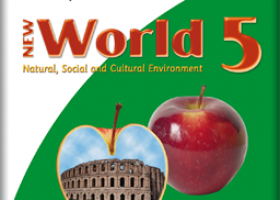

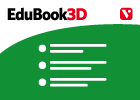
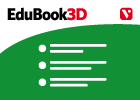

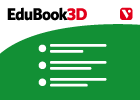


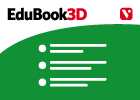
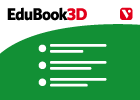

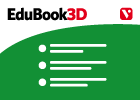
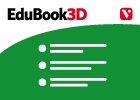
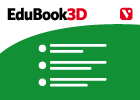
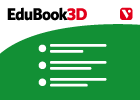
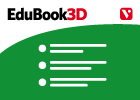

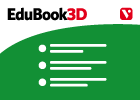
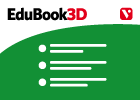
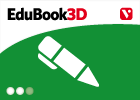
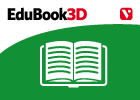
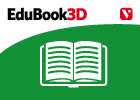

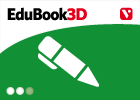
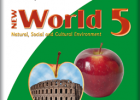


¿Dónde quieres compartirlo?
¿Quieres copiar el enlace?